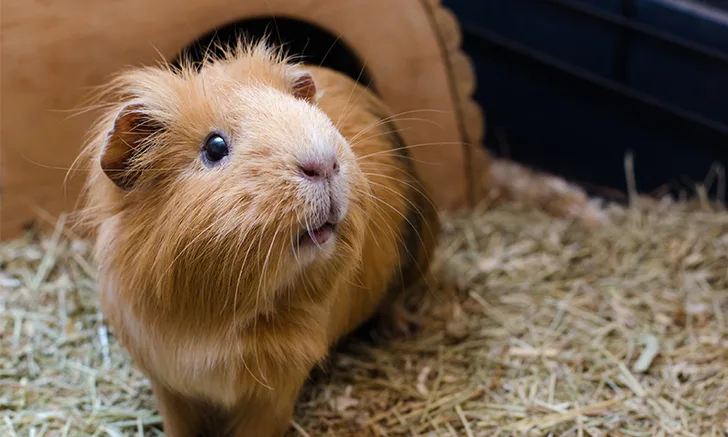A Major Anesthetic Innovation for Minor Species

Sponsored by Jurox
Exotic animals are becoming increasingly common as pets, with >13% of US households having a specialty or exotic pet.1 This presents a new area of opportunity for many veterinarians, as they are more likely than ever to be called upon to treat these species.
Offering exotic animal services can provide substantial benefits. Treating these patients allows veterinarians to serve a larger cross section of pets and their owners. Expanding services to include exotics can also offer financial benefits. In addition, exotic animal medicine can provide valuable opportunities for veterinarians to expand their scope of knowledge and take on new challenges.
Sedation in Exotic Companion Animals
Unlike other companion animals, exotic patients often require sedation for a comprehensive physical examination and/or laboratory sample collection,2 which can present an additional challenge, especially for veterinarians less familiar with working with exotic species. Therefore, veterinary practices need safe, flexible, and convenient sedation agents for use in exotic pets.
Alfaxan® Multidose IDX (alfaxalone) is a sedative/anesthetic Indexed through the FDA for use in >50 non-food–producing minor species, including numerous exotic species. In addition to being approved for use in these species, Alfaxan® Multidose IDX offers detailed species-specific dosing instructions combined with flexible routes of administration. Alfaxalone can meet many sedation needs of veterinarians offering exotic animal services.
With the use of Alfaxan® Multidose IDX, Ozzy and his veterinary team benefited from a safe, smooth, sedated examination and treatment process.
Ozzy’s Case
Ozzy, a 2.4-lb (1.1-kg), 2-year-old, adult male guinea pig, was presented for evaluation of a small, firm mass on the lateral aspect of the thorax. Physical examination was otherwise unremarkable. Because the mass appeared on palpation to be intradermal and not associated with underlying tissue, excisional biopsy was performed using sedation and local anesthesia.
Ozzy was sedated with midazolam HCl (0.5 mg/kg), hydromorphone HCl (0.3 mg/kg),3 and alfaxalone (2 mg/kg) combined in a syringe and administered as a single IM injection. Because the level of sedation was not adequate for local surgery, an additional dose of alfaxalone (1 mg/kg IM) was administered.
After Ozzy was adequately sedated, the affected area was clipped and prepared for local surgery. The periphery of the mass and area directly below the mass were locally blocked with an infiltration of lidocaine (5 mg/kg) and bupivacaine (2 mg/kg). A transparent adhesive drape was placed to avoid towel clamps, which could not be used in this sedated patient. The mass was completely excised, and the area was sutured with 4-0 absorbable monofilament suture in an intradermal pattern. Recovery was unremarkable.
Sedation monitoring parameters, including body temperature, respiratory rate, and pulse rate, remained acceptable throughout the procedure. No surgical or anesthetic complications occurred, and Ozzy recovered uneventfully.
Alfaxalone Use in Non-Food–Producing Minor Species
Alfaxalone is a synthetic neuroactive steroidal anesthetic, achieving its central effects via interactions with the γ-aminobutyric acid (GABA) subtype A receptor. Alfaxalone has a wide margin of safety4,5 and has been used experimentally in guinea pigs at ≤20 mg/kg SC for nonpainful procedures not requiring complete immobility or general anesthesia.6 When administered SC in guinea pigs, alfaxalone can be used alone or in conjunction with dexmedetomidine and buprenorphine.4
In addition to SC administration, alfaxalone can also be administered to guinea pigs as an IM injection (up to 5 mg/kg).4 IM administration provides a more rapid onset (≈3 minutes) and more short-lived sedation (≈30 minutes) as compared with SC administration.7 This administration flexibility allows veterinarians to choose the dosing protocol that is most appropriate for the individual patient and procedure.
The above procedure was painful; this pain was abated with the addition of an opioid and local analgesia. Although alfaxalone has no commercially known reversal agent, midazolam could potentially be reversed with flumazenil and hydromorphone with naloxone if necessary.
Alfaxan® Multidose IDX: A Major Advancement for Minor Species
Alfaxan® Multidose IDX is a single drug labeled to treat a wide variety of species, including fish, reptiles, amphibians, birds, non-human primates, rodents, ferrets, non-food ungulates, and marsupials. The drug label provides detailed dosing protocols for each labeled species, from alpacas to zebrafish.
For most species, multiple dosing protocols are provided to allow for flexibility in administration. In addition, protocols list possible concomitant drugs, their doses, and routes of administration. Variable protocols and route-of-administration methods allow for maximum flexibility.
The only medical contraindications to this medication are animals with a known sensitivity to Alfaxan® Multidose IDX or animals in which anesthesia/sedation are contraindicated. Therefore, this medication can be used safely in most non-food–producing minor species.

For full Prescribing Information on Alfaxan® Multidose IDX, visit jurox.com/us/product/alfaxan-multidose-idx.